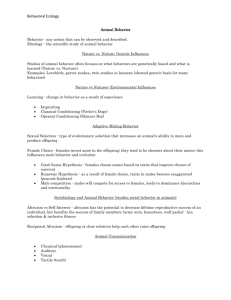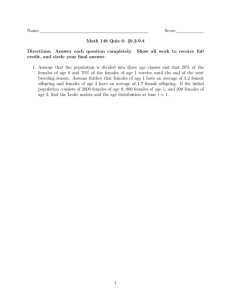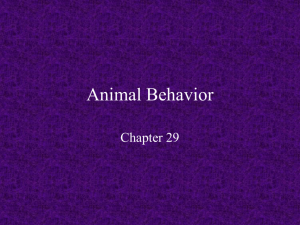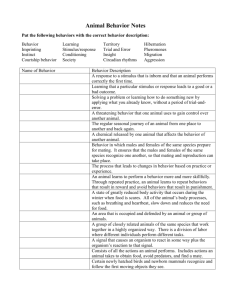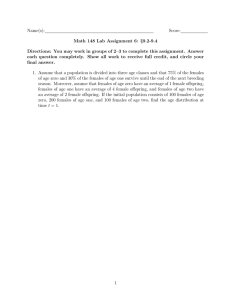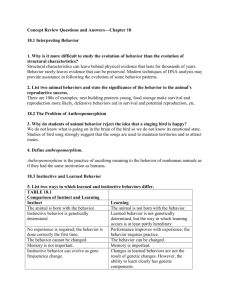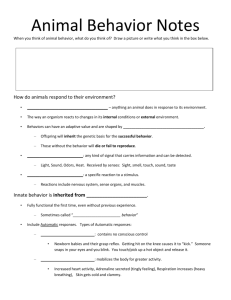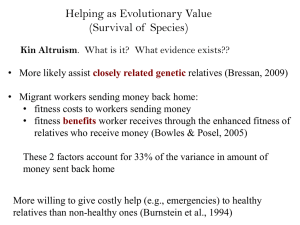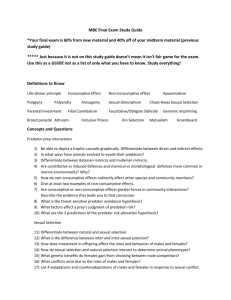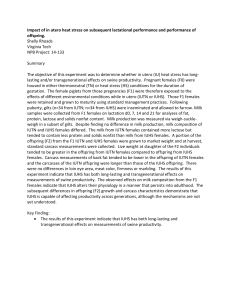Ch 51 Animal Behavior
advertisement
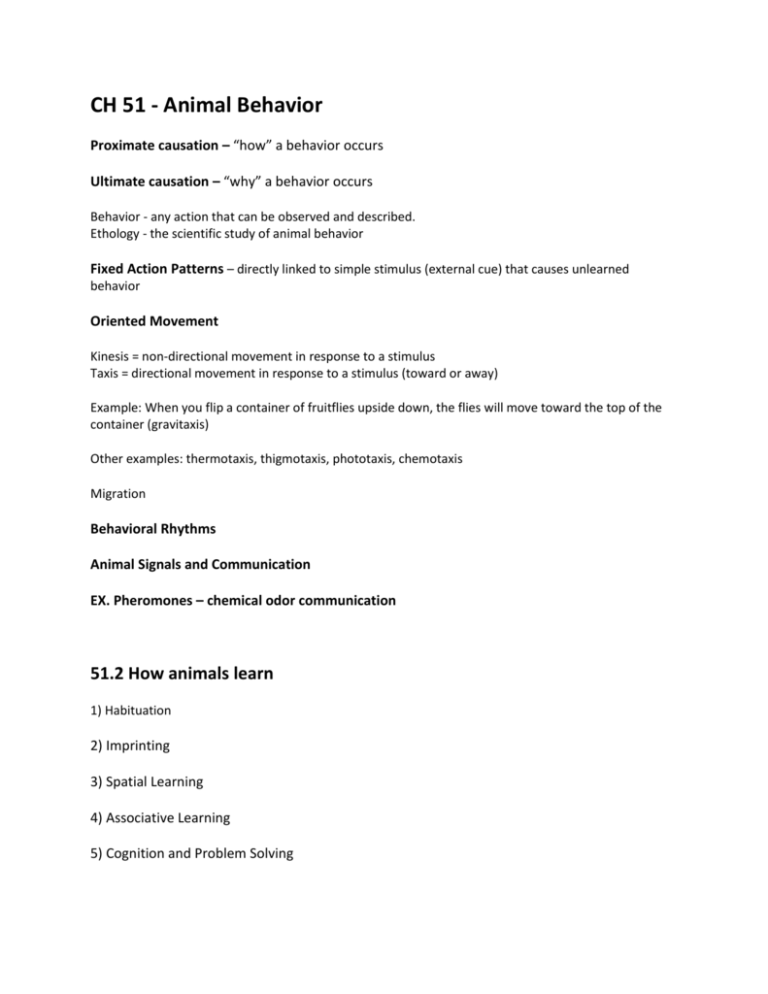
CH 51 - Animal Behavior Proximate causation – “how” a behavior occurs Ultimate causation – “why” a behavior occurs Behavior - any action that can be observed and described. Ethology - the scientific study of animal behavior Fixed Action Patterns – directly linked to simple stimulus (external cue) that causes unlearned behavior Oriented Movement Kinesis = non-directional movement in response to a stimulus Taxis = directional movement in response to a stimulus (toward or away) Example: When you flip a container of fruitflies upside down, the flies will move toward the top of the container (gravitaxis) Other examples: thermotaxis, thigmotaxis, phototaxis, chemotaxis Migration Behavioral Rhythms Animal Signals and Communication EX. Pheromones – chemical odor communication 51.2 How animals learn 1) Habituation 2) Imprinting 3) Spatial Learning 4) Associative Learning 5) Cognition and Problem Solving 51.3 Nature vs. Nurture: Genetic Influences Studies of animal behavior often focuses on what behaviors are genetically based and what is learned (Nature vs. Nurture) Examples: Lovebirds, garter snakes, twin studies in humans (showed genetic basis for many behaviors) 51.1 Nature vs Nurture: Environmental Influences Learning - change in behavior as a result of experience Fixed Action Pattern (FAP) - specific behaviors performed in specific ways, they rarely change, though some can improve Imprinting - form of learning, a response to only one kind of animal or object Associative Learning - behavior that involves an association between two events 1. Classical Conditioning (Pavlov's Dogs) 2. Operant Conditioning (Skinner Box) Other types of learning: insight, imitation, habituation, trial-and-error Animal Communication 1. 2. 3. 4. Chemical (pheromones) Auditory Visual Tactile (touch) 51.4 Adaptive Mating Behavior Sexual Selection - type of evolutionary selection that increases an animal's ability to mate and produce offspring Sexual Dimorphism - males and females have distinctive appearances Female Choice - females invest more in the offspring, tend to be choosier about their mates; this influences male behavior and evolution Good Genes Hypothesis - females choose mates based on traits that improve chance of survival Photo Credit: fanz via Compfight cc Runaway Hypothesis - as a result of female choice, traits in males become exaggerated (peacock feathers) Male competition - males will compete for access to females, leads to dominance hierarchies and territoriality 51.5 Sociobiology and Animal Behavior (studies social behavior in animals) Altruism vs Self Interest - altruism has the potential to decrease lifetime reproductive success of an individual, but benefits the success of family members (army ants, honeybees, wolf packs) - kin selection & inclusive fitness Reciprocal Altruism - offspring or close relatives help each other raise offspring
